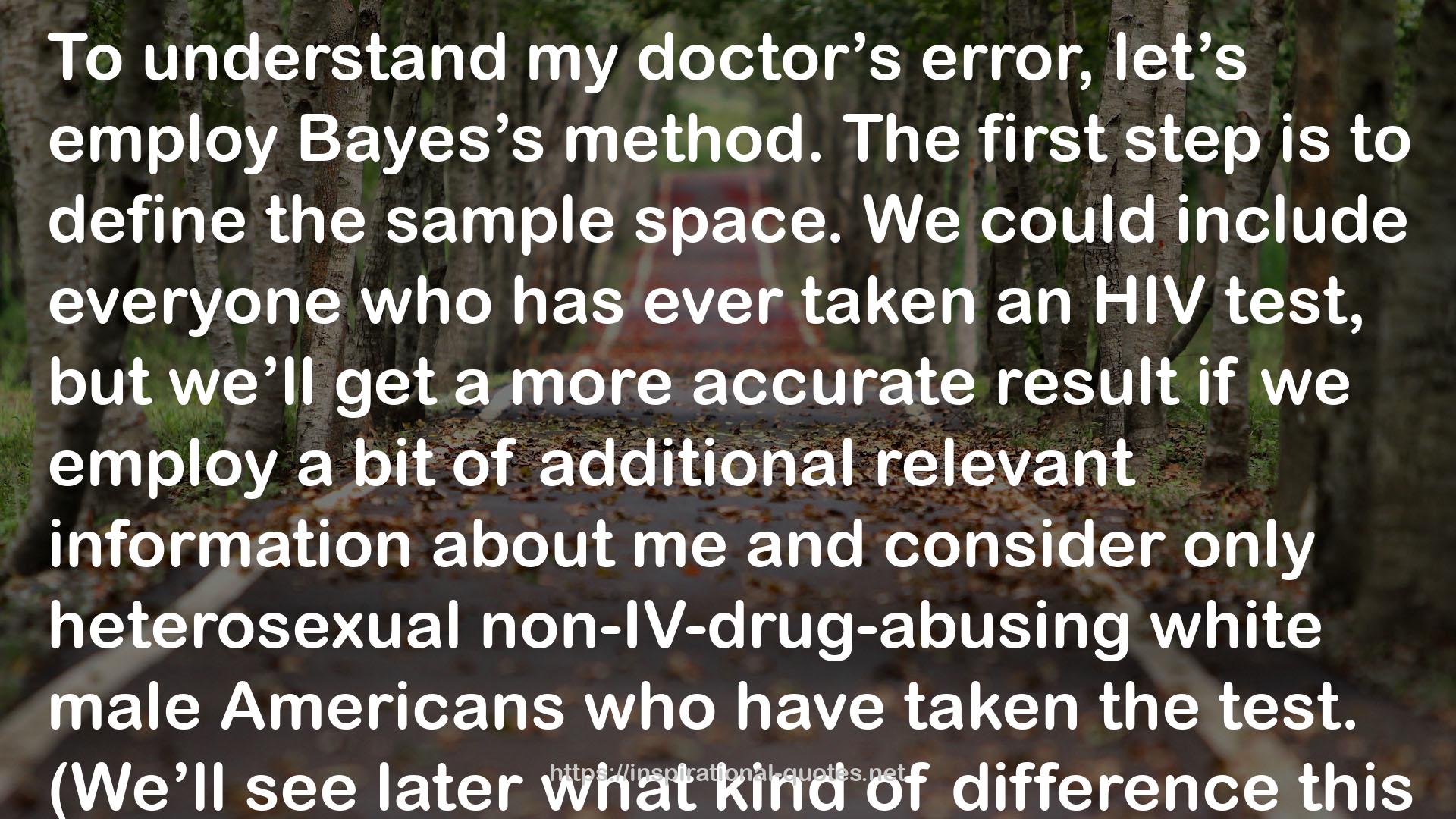" To understand my doctor’s error, let’s employ Bayes’s method. The first step is to define the sample space. We could include everyone who has ever taken an HIV test, but we’ll get a more accurate result if we employ a bit of additional relevant information about me and consider only heterosexual non-IV-drug-abusing white male Americans who have taken the test. (We’ll see later what kind of difference this makes.) Now that we know whom to include in the sample space, let’s classify the members of the space. Instead of boy and girl, here the relevant classes are those who tested positive and are HIV-positive (true positives), those who tested positive but are not positive (false positives), those who tested negative and are HIV-negative (true negatives), and those who tested negative but are HIV-positive (false negatives). Finally, we ask, how many people are there in each of these classes? Suppose we consider an initial population of 10,000. We can estimate, employing statistics from the Centers for Disease Control and Prevention, that in 1989 about 1 in those 10,000 heterosexual non-IV-drug-abusing white male Americans who got tested were infected with HIV.6 Assuming that the false-negative rate is near 0, that means that about 1 person out of every 10,000 will test positive due to the presence of the infection. In addition, since the rate of false positives is, as my doctor had quoted, 1 in 1,000, there will be about 10 others who are not infected with HIV but will test positive anyway. The other 9,989 of the 10,000 men in the sample space will test negative. Now let’s prune the sample space to include only those who tested positive. We end up with 10 people who are false positives and 1 true positive. In other words, only 1 in 11 people who test positive are really infected with HIV. "
― Leonard Mlodinow , The Drunkard's Walk: How Randomness Rules Our Lives
